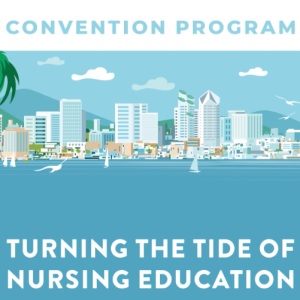Back
608 - Virtual Reality Simulation in Nursing Education: Where’s the Evidence?
Friday, November 17, 2023
10:20 AM – 11:10 AM PDT
Location: Golden Hill AB
Earn: 1 CEU

Laura Gonzalez, PhD, APRN, CNE, CHSE-A, ANEF, FAAN (she/her/hers)
VP, Healthcare Innovation
Sentinel U
Ellijay, Georgia
This session will share findings from a unique initiative designed to provide in-kind grant funding for research on the use of virtual simulation and nursing outcomes. Six unique programs submitted unencumbered research proposals that explored numerous questions related to clinical outcomes and prioritization of care using a commercially available virtual simulation experience.
The promise of virtual simulations through PC-enabled virtual experiences is captivating. With turnkey solutions, auto-grading capabilities, and the ability to practice in a safe, remote, and asynchronous environment at a fraction of the cost of high-fidelity simulation, it's easy to understand why it has gained so much attention. However, without sufficient evidence to support its widespread adoption, the industry has a responsibility to prioritize learners and patient safety. Unfortunately, unbiased collaborative research is lacking, and industry often develops content without user input. To encourage faculty investment and adoption of these commercial products, there must be data to support improved clinical judgment and prioritization skills. It is essential for software developers to support research to establish outcomes, not only to inform end-users and faculty but to aid in software development. Ultimately, the success of virtual simulations hinges on the industry's willingness to support unbiased research and prioritize the needs of learners and patients alike. This session will share a unique and novel approach to increase support for the use of virtual simulations.
Nursing scholars and researchers from 6 educational institutions submitted unencumbered proposals (N=275) to study the impact of a commercially available virtual solution. The unencumbered grants explored various questions including student knowledge, confidence, critical decision-making, and clinical judgment. Studies included both quantitative and qualitative approaches. Multiple instruments such as Casey-Fink Graduate Nurses Experience, Creighton Competency Evaluation Instrument (CCE-I), and standardized and custom exam scores were utilized to assess student and learner performance. The studies occurred during a 6–12-month period. Each study group was followed by a seasoned researcher to assist with methodology and questions. Training and technical assistance was provided early on for faculty and learners and was available as needed for the duration of the study.
The promise of virtual simulations through PC-enabled virtual experiences is captivating. With turnkey solutions, auto-grading capabilities, and the ability to practice in a safe, remote, and asynchronous environment at a fraction of the cost of high-fidelity simulation, it's easy to understand why it has gained so much attention. However, without sufficient evidence to support its widespread adoption, the industry has a responsibility to prioritize learners and patient safety. Unfortunately, unbiased collaborative research is lacking, and industry often develops content without user input. To encourage faculty investment and adoption of these commercial products, there must be data to support improved clinical judgment and prioritization skills. It is essential for software developers to support research to establish outcomes, not only to inform end-users and faculty but to aid in software development. Ultimately, the success of virtual simulations hinges on the industry's willingness to support unbiased research and prioritize the needs of learners and patients alike. This session will share a unique and novel approach to increase support for the use of virtual simulations.
Nursing scholars and researchers from 6 educational institutions submitted unencumbered proposals (N=275) to study the impact of a commercially available virtual solution. The unencumbered grants explored various questions including student knowledge, confidence, critical decision-making, and clinical judgment. Studies included both quantitative and qualitative approaches. Multiple instruments such as Casey-Fink Graduate Nurses Experience, Creighton Competency Evaluation Instrument (CCE-I), and standardized and custom exam scores were utilized to assess student and learner performance. The studies occurred during a 6–12-month period. Each study group was followed by a seasoned researcher to assist with methodology and questions. Training and technical assistance was provided early on for faculty and learners and was available as needed for the duration of the study.
Objectives:
- Understand the value of desk VR for knowledge acquisition
- Appraise outcome data
- Explore use cases

.jpg)
.png)
.jpg)
.jpg)
.png)
.jpg)
.jpg)
.jpg)
.jpg)
.png)
.png)
.png)
